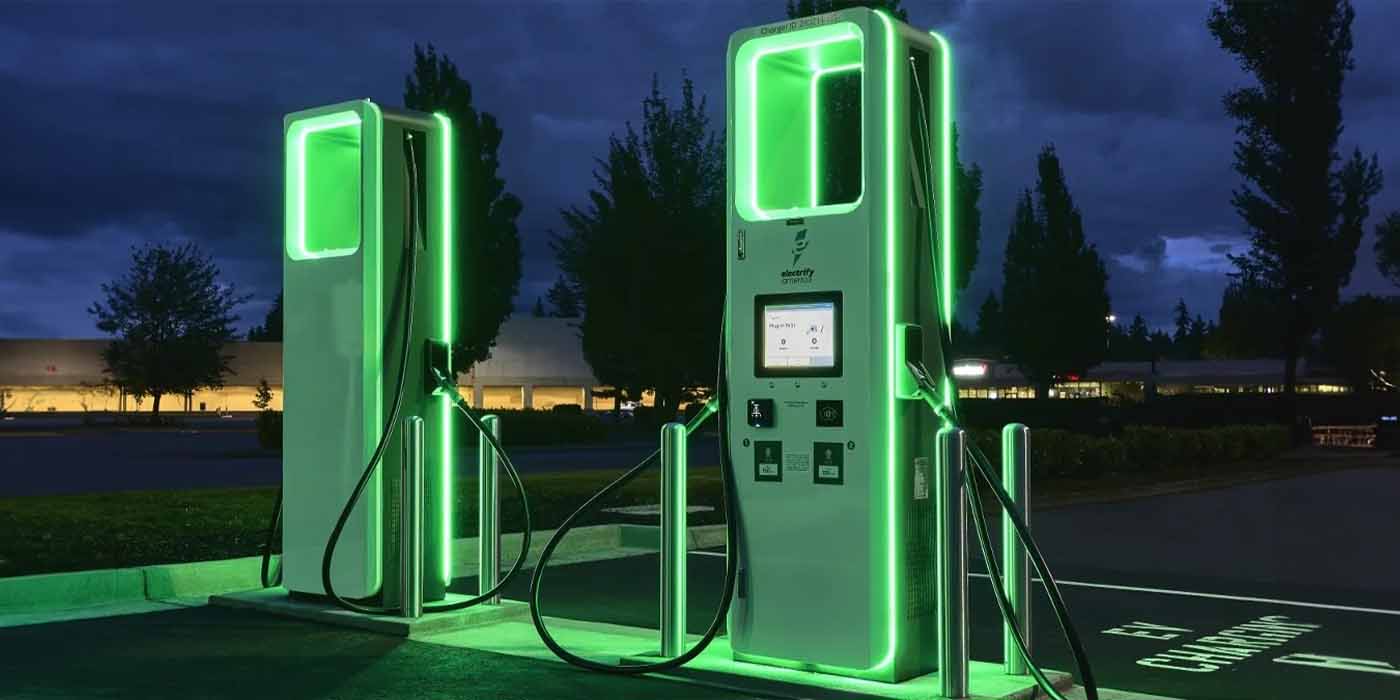
Electrify America (EA) has kicked off a pilot at 10 of its charging stations, limiting EVs to 85% state of charge to reduce congestion.
Electrify America’s 85% state of charge pilot
EA launched its Congestion Reduction Pilot at stations in Southern California at select high utilization charging stations with congestion issues. The stations are also in areas where there are more EV chargers to ensure EVs with less range aren’t adversely impacted.
The point of the pilot is to reduce wait times. If someone sets their EV to charge to 90-100%, then it takes a much longer time to charge and can cause congestion.
Once a charging EV reaches 85% state of charge, the session will automatically end, and drivers will have 10 minutes to move their vehicle before idle fees are incurred. (And no, you can’t plug it back in to get more charge as it won’t work.)
Electrify America said it launched the pilot in response to customer feedback, and it says it will continuously monitor station performance and customer sentiment during the pilot, and adjust as needed.
The 10 Southern California EV charging stations’ addresses are located here.
Electrek’s Take
I asked my colleague (and EV driver) Chance Miller what he thought of EA’s new pilot. He said:
I just did a 3,000-mile road trip across the US in my Mach-E, and based on my experience with Electrify America, this should go a long way toward reducing congestion. I came across a lot of people unnecessarily charging to 100% – especially people with free charging promotions from their automaker.
Tesla already does this at Superchargers, and it’s a good idea. I also welcome this idea at EA chargers, as I drive a VW ID. 4, still have free charging from EA, and use its fast chargers.
It’s going to be more challenging for EA than Tesla since it needs to get the pilot message out to, and accommodate, multiple EV makes. Perhaps the company should just go analog and put a prominent sign up at each pilot EV charging station that explains the pilot so people don’t freak out.
Top comment by Gninoked
Tesla doesn't do this exactly. They only engage the congestion system for superchargers that are above 50% utilization - which is far fewer than EA since they normally have 8+ superchargers per location. When engaged the car automatically resets the max charge level (often 80%, but sometimes higher) when plugging in, however the driver can re-set the limit to whatever they want. If the car exceeds the congestion limit they get a notification and then have 5 minutes to unplug the car. If they don't then the congestion charge is added to the total (currently $1 per minute.) So it is possible to charge past the limit if a driver is willing to pay for it. In several 2-4k mile roadtrips I've only been hit with the congestion charge once and it was worth it to pay the extra couple dollars in order to avoid an additional stop.
I’m really curious to see how this pans out. I’m also curious to hear what you think of this pilot. Let me know in the comments below.
Read more: VW finally rolls out Plug&Charge on its 2023 ID.4s
If you’re an electric vehicle owner, charge up your car at home with rooftop solar panels. To make sure you find a trusted, reliable solar installer near you that offers competitive pricing on solar, check out EnergySage, a free service that makes it easy for you to go solar. They have hundreds of pre-vetted solar installers competing for your business, ensuring you get high quality solutions and save 20-30% compared to going it alone. Plus, it’s free to use and you won’t get sales calls until you select an installer and share your phone number with them.
Your personalized solar quotes are easy to compare online and you’ll get access to unbiased Energy Advisers to help you every step of the way. Get started here. –ad*
FTC: We use income earning auto affiliate links. More.





Comments